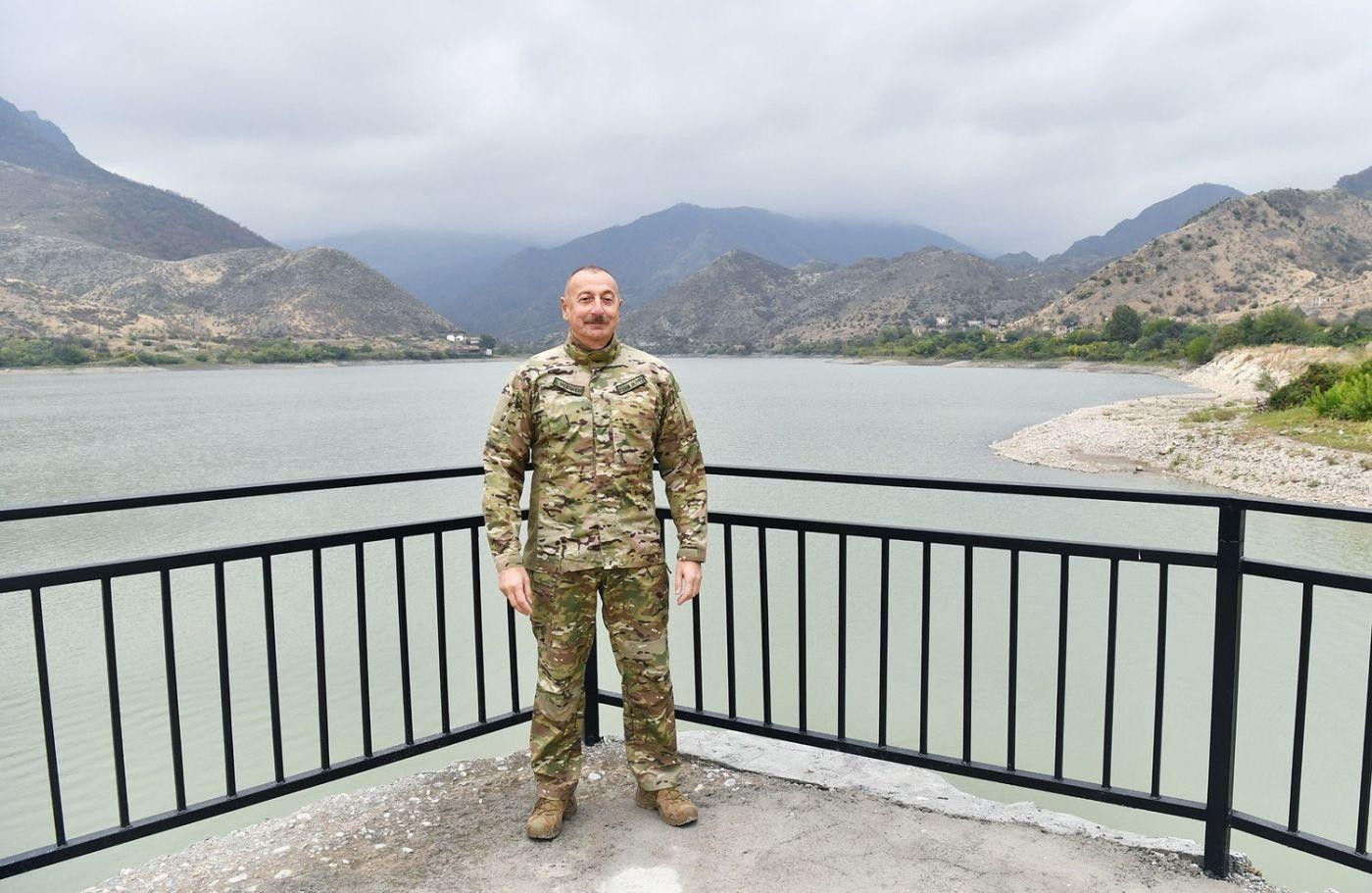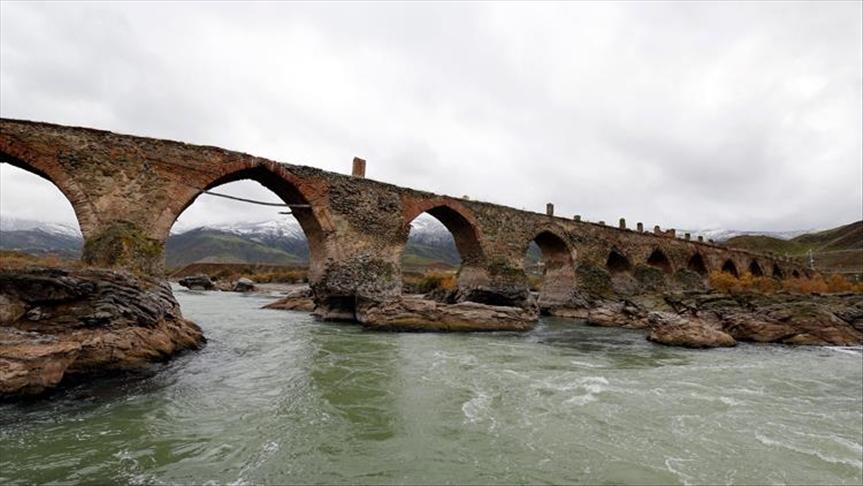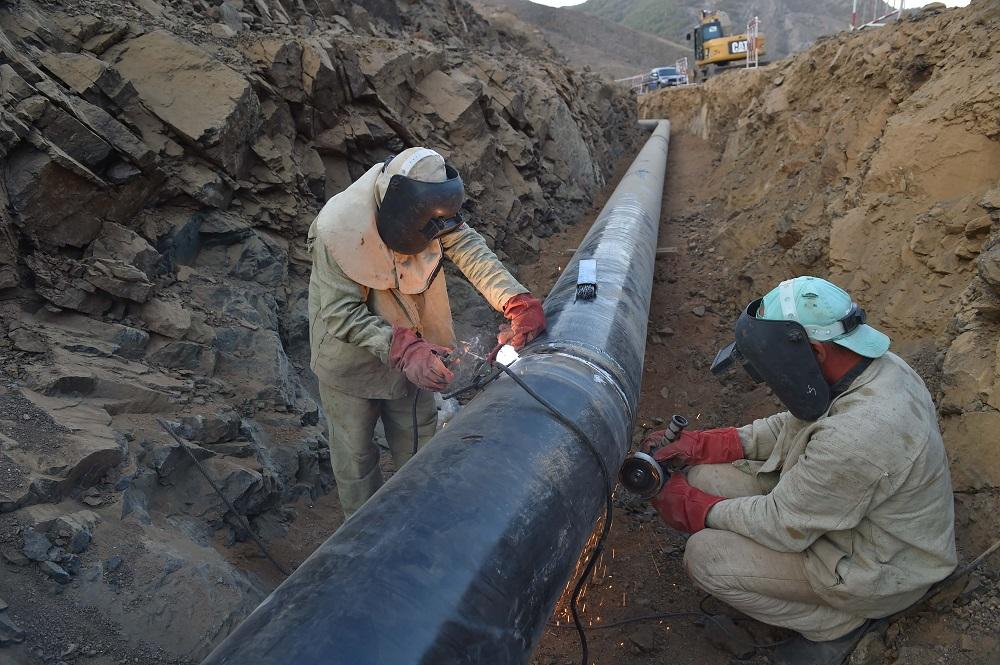Azerbaijan boosts development of water infrastructure in Karabakh region Review by Caliber.Az
For over twenty months, the large-scale restoration of transport, energy, and other utility infrastructure in the liberated lands of Azerbaijan is gradually bringing the citizens of the country step by step closer to their homes. The most important goal in this accomplishment is the construction and reconstruction of water supply and irrigation systems in the Karabakh and East Zangazur economic regions, where over 400 facilities have been provided with drinking water by the efforts of Azersu and Melioration and Water Management over the past period, reservoirs are being modernised, artesian wells are being drilled, etc. In order to accelerate work on water supply in the region, Azersu attracts contractors: recently the winner of the tender was announced - Az Graft Construction Ltd.

Azerbaijan, which has faced the global problem of desertification for decades, experienced a serious irrigation crisis in 2019-2021 due to the shallowing of the Kura and Araz basins. The irrigation water shortage situation was somewhat stabilised by the rainy spring of 2022, however, the sustainable overcoming of the water deficit in Azerbaijan is only possible after the construction of new reservoirs, modernisation of irrigation canals, and application of economical irrigation systems. The importance of attracting the resources of rivers and reservoirs in the water-saturated region of the Lesser Caucasus is enormous for solving the problem of irrigation water deficit.
This is no easy task, as, over the thirty years of occupation of Karabakh and the seven Azerbaijani districts surrounding it, the Armenian aggressors have rendered the region's water infrastructure utterly useless. Moreover, the separatist regime has used water resources as an instrument of pressure on Azerbaijan. By controlling the rivers and reservoirs of the Lesser Caucasus basin, where over a quarter of the republic's water potential is formed, capturing a significant portion of the Araz River, the separatists carried out a real ecological terror. During the spring-summer period, which is crucial for the agricultural sector, water from the Sarsang and Sugovushan reservoirs was cut off, which led to artificial drought in some areas of the central part of the country, and in winter water was deliberately released in excess, causing floods on the Terterchay River and damaging the agricultural lands located in the lowlands.
Today, after the expulsion of the occupants, Azerbaijan fully controls the watercourses of all key rivers and reservoirs in the region and is in a position to plan and implement water infrastructure modernisation projects on a long-term basis. This is an extremely important point for the future, as according to forecasts by the UN and several other international think tanks, drinking and irrigation water will be the main resource deficit on the planet already by 2040. As a matter of fact, disputes and conflicts over water resources and their allocation have caused political tension between the countries of the world for decades. According to the UN, the basins of more than 260 of the world's rivers are divided among several countries, and there have been 21 water wars in the last 50 years, not to mention over 500 smaller conflicts between countries in Africa, the Middle East, Indochina, Central, and Southeast Asia. Water conflicts have also been observed in the post-Soviet space: just remember Ukraine's stopping the water supply to Crimea, occupied in 2014, or last year's bloody clashes between Kyrgyzstan and Tajikistan over a water allocation point on the Ak-Suu border river.
As for Azerbaijan, its victory in the Patriotic War of 2020 ensured full control over the republic's strategically important water resources. In particular, we are talking about the potential of the Araz River, where, thanks to joint use with Iran, the Khudaferin reservoir with a capacity of more than 1.6 billion cubic metres will be available for irrigation of 260 thousand hectares of arable land in the south-west of the country. As a result of the return of the Sugovushan reservoir with a capacity of 5.9 million cubic metres into the economic turnover of the country, today the uniformity of flows in Terterchai has been regulated and the irrigation problems in Terter, Goranboy, Barda, and Yevlakh districts have already been solved. In the liberated districts of Kalbajar and Lachin, there are mountainous sources of 10 key rivers of the Karabakh region, including such full-flowing rivers as Khakari, Terterchay, Bazarchay, and Khachinchay. It is these rivers that form the main watercourse in the Minor Caucasus region, feeding, among others, the Sarsang reservoir with a capacity of 560 million cubic metres. Control of the Sarsang reservoir, the largest in the region, will also be taken over by Azerbaijan tentatively by 2025.

The availability of the huge water potential of the Lesser Caucasus mountain massif is a huge benefit for Azerbaijan and will make it possible to provide water supply and irrigation not only for the liberated territories but also to make up for the shortage of irrigation water in the south-east of the country. At present, the JSC "Land Reclamation and Water Economy" is developing a feasibility study for the construction of the Hakarichay reservoir with a volume of 90 million cubic meters on the river Hakari flowing in the Lachin region, at the expense of which clean drinking water will be supplied to the liberated from occupation areas, in general, three million population of 14 regions of Azerbaijan, including distant Masalli. It is not the only project of this kind: the repair work has already begun on the reservoirs Kondelanchay-1, Kondelanchay-2, and Ashagi Kondelanchay, included in the general system, and the use of these water resources will allow irrigating 6.2 thousand hectares of crops in Fuzuli district. A total of 9 water reservoirs, including the Aghdamkend, Khachynchay, and Bargushad reservoirs, are to be restored or built from scratch in the returned territories. Plans are also under consideration to reconstruct the Sol Sahil canal of the Terterchay River; rehabilitation works are also envisaged in the water sector of Aghdam, Fuzuli, Jabrayil, Zangilan, and Gubadli districts, ensuring a reliable water supply for the future breadbasket of Azerbaijan.
However, it should be mentioned that the implementation of water projects is a very capital-intensive process and its implementation will require more than one year. The situation is complicated by the fact that along with the destruction of Azerbaijani towns and villages to the ground, the separatist regime over the long years of occupation has completely destroyed the water supply system, waterworks and pumping stations, artesian wells, irrigation canals not repaired for decades have fallen into complete disrepair, most reservoirs have swollen to a critical level.
The scale of the destruction of the water and irrigation infrastructure in the Karabakh region is considerable; nevertheless, some progress has already been made. Almost immediately after the cessation of hostilities, the efforts of specialists from Azersu and Land Reclamation and Water Management began to restore the water sector in the areas liberated from occupation. In particular, by early spring of this year, an uninterrupted water supply had been provided to more than 400 facilities, mainly in Shusha, but also in Kalbajar, Zangilan, and the village of Hadrut. The process of rehabilitation of water infrastructure is actively continuing in the town of Aghdam, four neighbouring villages, and the nearby industrial zone. Thus, the construction of the pipeline network in the Aghdam district began, three exploration wells were drilled, and in total 24 sub-artesian wells will be drilled to provide the population with qualitative drinking water. Water extracted from sub-artesian wells will be accumulated in reservoirs located on the highest point of the district and transferred to Aghdam and other settlements via gravity flow pipes. Also within the framework of the "Ağıllı su" project the design of Aghdam's future water distribution network and sewage and rainwater sanitation system has been developed, the control and management of which will be carried out by an automated SCADA system. In the future, the wastewater will be used for irrigation purposes after treatment in a biological type plant with a capacity of 30 thousand cubic metres of water per day.

Similar water development projects are being elaborated in the Jabrayil region, where the development of an industrial zone is underway and housing construction will soon begin. This year works on the rehabilitation of irrigation infrastructure in Jabrayil also started: hydraulic engineering mechanisms are restored, irrigation collectors and water channels are cleared of silt, and 5 pumping stations were launched, thanks to which about 4,810 hectares of cultivated land are irrigated in the district.
Large-scale reconstruction of water and irrigation infrastructure in the Karabakh region is becoming a catalyst, providing the work of producers of construction materials, design, and contracting companies. The other day, Azersu identified the winner of the tender for urgent works aimed at improving the drinking water supply in the liberated territories from the occupation. It was Az Graft Construction LLC, with which a contract in the amount of AZN 8.074 million was signed. The deadline for completion of the tender assignment is set at the end of 2025.








